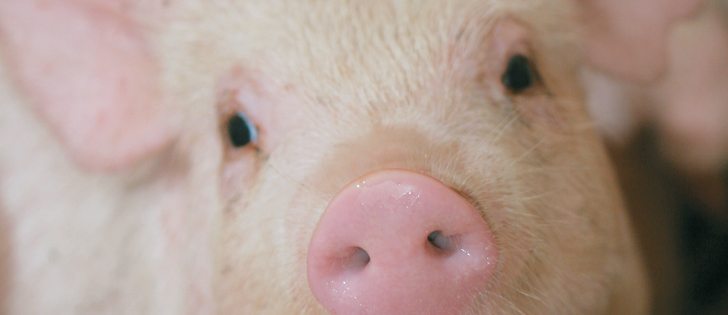The ravages of porcine epidemic diarrhea virus on hog production might be lessening this year, but the disease took markets by surprise last year.
Supply worries drove up prices last year, posting record highs in the spring, as the disease killed millions of pigs in the United States and moved less aggressively into Canada, said livestock market analyst Kevin Grier.
He said prices averaged 17 percent higher than in 2013.
“We knew (PED) was serious, but we didn’t have any idea of just how serious it was going to be,” Grier told a Jan. 30 conference call organized by Alberta Pork.
Read Also

Critical growing season is ahead for soybeans
What the weather turns out to be in the United States is going to have a significant impact on Canadian producers’ prices
In the United States, the year began with the industry “not having any concept, really, of how bad PED was going to be with regard to market and slaughter impact.”
Traders expected a one percent increase in hog slaughter, but it fell six to seven percent. PED killed eight million piglets.
“Interestingly, though, the production impact was much less because those folks in the United States made their pigs so much bigger,” he said.
“So while we might have had a six percent reduction in slaughter in the United States, we actually only had a two percent reduction in production.”
Nevertheless, uncertainty of supply kept prices high. As a result, 2014 turned out to be a phenomenal year for hog prices for producers without PED in their barns, which included most Canadian producers.
This year is looking bearish.
“The prices are down fairly dramatically. Basically, traders are concerned about supplies. They’re concerned about pretty disappointing November trade futures. But with that said, the U.S. Department of Agriculture’s Hogs and Pigs Report for December indicated slaughter is going to be up,” he said.
The USDA in January forcast pork production at 23.895 million pounds, up 4.6 percent over 2014.
For the first time ever, more pork will be produced than beef.
He said traders are now looking at PED in the rear-view mirror, but that is likely premature, given that new cases continue to appear.
Today’s low futures prices give no hint of supply worries, but Grier said he thinks futures will bounce.
In Grier’s Canadian Pork Market Review issued Feb. 2 he sees nearby futures rising to US$72 per hundredweight by April and $81 by May.
He sees Index 100 hogs in Alberta in April at C$175-$180 per 100 kilograms based on an US80 cents Canadian dollar and $190-$195 in May.
But the futures markets for now are weak.
“I think these folks are scared about the (market ready) numbers and I think these folks are scared about exports,” he said about futures traders.
“There’s a lot of uncertainty in export markets, and that’s probably going to be the thing that might make or break us in 2015: export markets and uncertainty.”
Grier thinks pork demand is fairly strong. A stronger U.S. dollar might make it tough to export, but domestic demand is good.
In Canada, the potential for hog industry growth is tepid at best.
Last year’s profits didn’t make up for losses from 2006-13, and barn construction costs in Canada are much higher than those in the U.S.
Banks are cautious about lending to the hog industry, he added.
“From a variety of different perspectives, I don’t know that we’re going to see much growth or expansion in Canada, especially relative to the United States.”
That means packing plant operations will continue to be an issue.
While the Olymel plant in Red Deer is now slaughtering more pigs because of the Big Sky acquisition, it is still running at less than capacity. The Maple Leaf plant in Brandon is also running at 70 to 75 percent capacity, he said.
The situation is somewhat better at Hylife in La Broquerie, Man., largely because it has greater control over supply, Grier said.
In Eastern Canada, the loss of 70,000 pigs from PED may have masked the negative effects of the Quality Meat Packers closure last spring in Toronto, at least in the early part of the year.
Contact barb.glen@producer.com


















